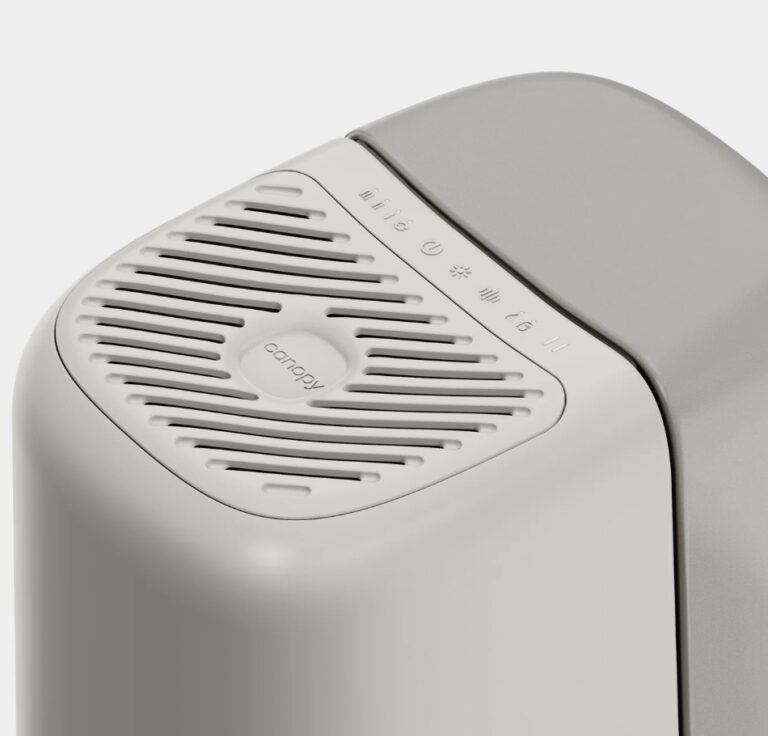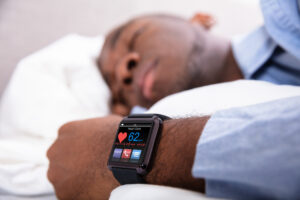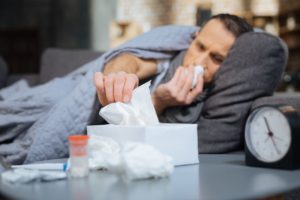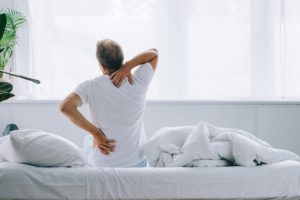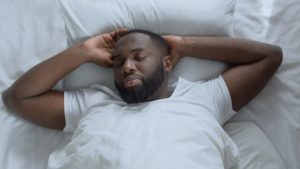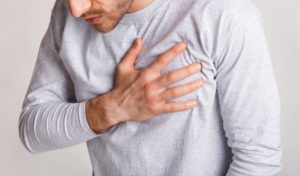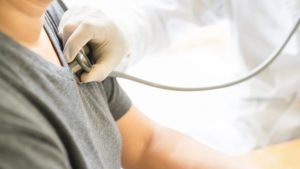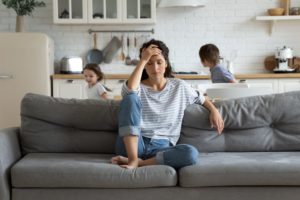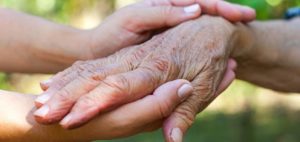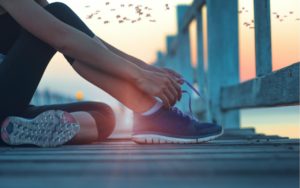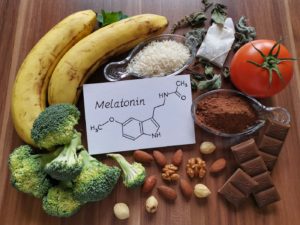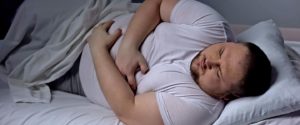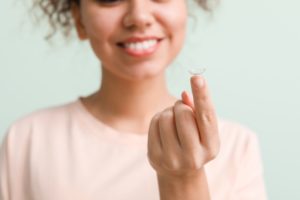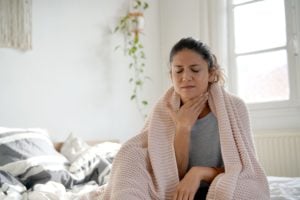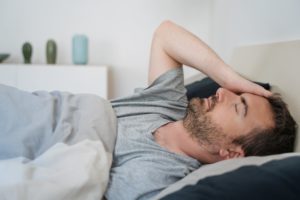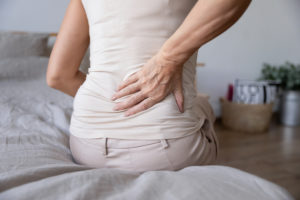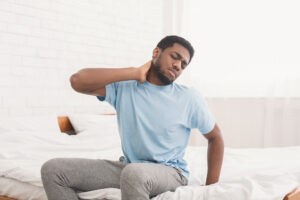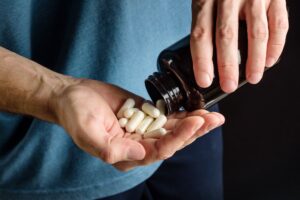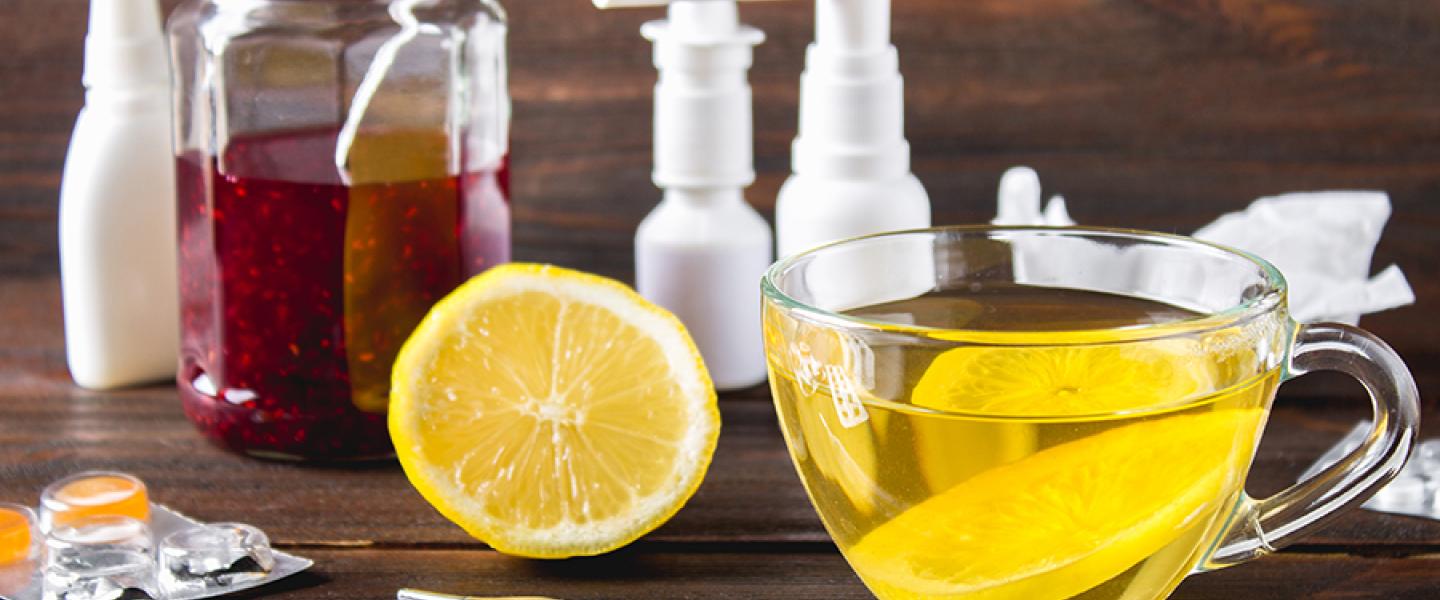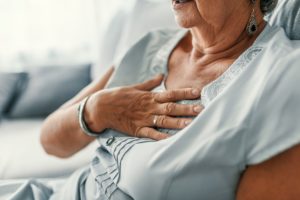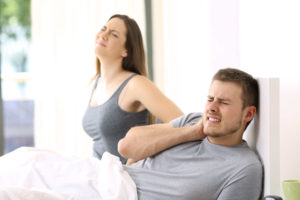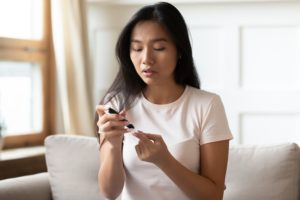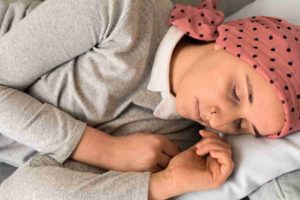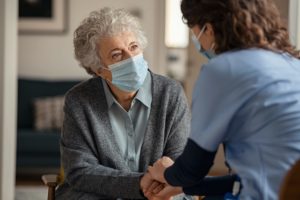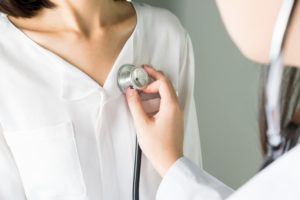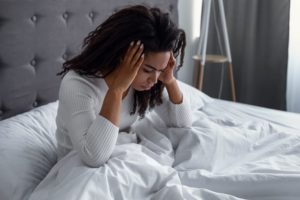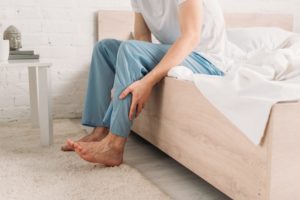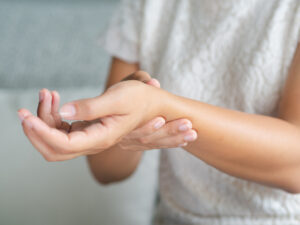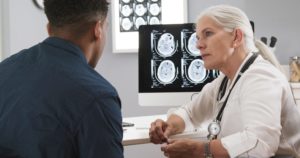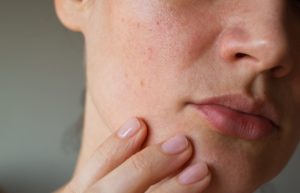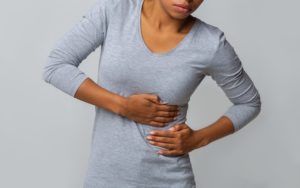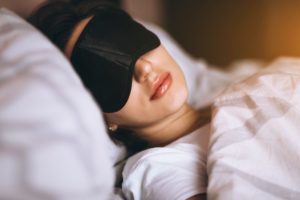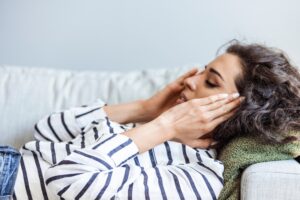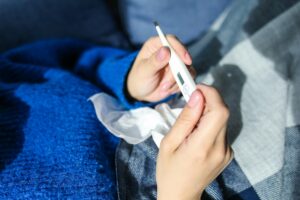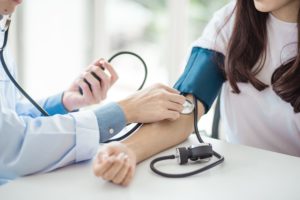When you buy through our links, we may earn a commission. Products or services may be offered by an affiliated entity. Learn more.
Nosebleeds While Sleeping
Nosebleeds are a common occurrence, with about 60% of people experiencing them at some point in life. Over 90% of nosebleeds are mild and do not require medical attention.
A variety of factors contribute to nosebleeds, including environmental triggers like dry air or allergens that are often found in the bedroom. We discuss what causes nighttime nosebleeds, how to avoid them, and when to contact your doctor.
What Is Epistaxis?
A nosebleed — medically referred to as epistaxis — occurs when one of the five arteries serving the inside of the nose ruptures. This blood commonly travels forward out of the nostrils, but it can also move backward out of the nasal cavity and into the throat. Certain nasal blood vessels are especially prone to being disrupted, since they sit beneath thin skin and their location near the entrance to the nostrils exposes them to variations in temperature and humidity.
What Causes Nocturnal Nosebleeds?
Like daytime nosebleeds, nocturnal nosebleeds happen for a variety of reasons. Understanding what causes nosebleeds while sleeping is the first step to preventing them, and blood-stained bed sheets, in the future.
Nose Picking
Nose picking or touching the nose is the most common cause of nosebleeds. Experts also advise against picking your nose after you have experienced a nosebleed, as doing so could cause the bleeding to resume.
Cold, Dry Air
Research suggests environmental qualities such as temperature, humidity, and pollution level affect the risk of developing nosebleeds.
A German study of patient records revealed that more people seek medical help for nosebleeds during cold months . Similarly, a study of online search trends across multiple countries found that more people search for information about nose bleeding in winter months . Overall, most studies that have focused on the association between nosebleeds and time of year show that more people experience nosebleeds during colder temperatures , and to a lesser extent, lower humidity.
Air Pollution
Researchers in Beijing analyzed air pollution severity at different times of the year and found that more children visited the doctor for nosebleeds during summer months, coinciding with an increased presence of certain pollutants. It appears that air pollution may irritate the nasal lining, though more research is needed to fully understand this connection.
Allergies
Seasonal allergies cause inflammation inside of the nose that may provoke nose bleeding. People with allergic rhinitis may also blow their noses more frequently than others. Blowing your nose too hard, whether due to allergies, a cold, or a flu, is another nosebleed trigger.
Medication Side Effects
Some people experience nosebleeds as a side effect of medication or medical treatments. It is important to discuss any concerns regarding your medication with your doctor. Medications that may cause or worsen nosebleeds include:
- Aspirin
- Blood thinners
- Certain types of selective serotonin reuptake inhibitors (SSRIs)
- Some antibiotics
- Corticosteroids applied inside the nose, for example to treat a stuffy nose
- Drugs that are taken through the nose
Most nosebleeds that occur as a medication side effect are not considered serious. In some cases, however, people have had severe nosebleeds requiring medical treatment as a result of taking medication.
Certain medical treatments may also lead to nosebleeds. For example, nosebleeds may be a potential side effect of using a continuous positive airway pressure (CPAP) machine, a common nighttime breathing treatment for people with obstructive sleep apnea. Saline irrigation , an allergy treatment that involves flushing the nasal cavity with salt water, has also been known to cause nosebleeds.
Underlying Illness
Nosebleeds are common and do not necessarily indicate an underlying illness. That said, they have been found to accompany certain medical conditions, including:
- High blood pressure
- Celiac disease
- Congestive heart failure
- Diabetes
- Infectious diseases
- Obstructive sleep apnea
- Hereditary hemorrhagic telangiectasia (HHT)
- Cancer
- Blood disorders, such as Von Willebrand disease
- Liver failure
More research is needed to better understand the relationship between nosebleeds and these illnesses. In some instances, a third factor such as treatment for the illness, rather than the illness itself, might be responsible for nosebleeds.
Age
Your risk of experiencing a nosebleed varies considerably depending on your age. Nosebleeds are very rare in children younger than 2 years old . Children between ages 2 and 10 years old experience nosebleeds commonly, however.
Nosebleeds occur less frequently after age 10, then become more common again in adults over 65. As older adults age, the risk of nosebleeds increases. Adults over age 85 face the highest risk, and are more than three times as likely to visit an emergency room for a nosebleed than adults younger than 65.
Biological Sex
Though not all research supports this trend, a person’s biological sex may influence their risk of experiencing nosebleeds, with many studies finding that more men seek medical help for nosebleeds. Similar patterns have been found among children.
Alcohol and Nicotine Use
Research suggests that nosebleeds are more frequent in people who consume excessive amounts of alcohol . People who use nicotine are also more likely to experience nosebleeds that require medical attention.
Many of the studies that draw conclusions about the frequency of nosebleeds in different populations base their results on the number of hospital or doctor visits. It is possible that these groups may have more severe nosebleeds, but other groups may have more frequent nosebleeds that do not require medical attention and therefore go unrecorded.
How to Stop a Nosebleed
To stop a nosebleed at home, medical professionals recommend first carefully removing any blood clots from the nose. You can use a tissue to do so gently, but avoid forcefully blowing your nose. Next, tilt your head forward slightly, the way you would if you were going to sniff something. Finally, lightly squeeze the bottom third of the nose with your fingers, so your nostrils are closed. Try staying in this position for five to 15 minutes.
Over-the-counter nasal sprays that contain oxymetazoline or phenylephrine can also help control nosebleeds. These sprays are meant to be used for a few days at most. Young children and adults who have high blood pressure or heart problems should talk to a doctor before using these sprays.
If your nosebleed lasts more than 30 minutes even after you have tried to stop it, it is time to see a doctor.
Tips for Avoiding Nosebleeds at Night
If you are experiencing nighttime nosebleeds, there are steps you can take to find relief.
- Blow Your Nose Gently: If you blow your nose in the evening, do so gently. Vigorous nose blowing and nose picking are common causes of nosebleeds.
- Use a Humidifier: Increasing moisture in the air you breathe by using a humidifier may help protect against nosebleeds. This strategy is particularly relevant in dry climates or during winter months, when indoor heating can dry out the air.
- Use a Moistening Nasal Spray: A saline nasal spray can help reduce nosebleeds by preventing your nostrils and nasal cavity from drying out. Saline nasal sprays contain salt water and are available over the counter in many stores and pharmacies.
- Treat Allergies: Since having allergies to airborne materials increases your risk of nosebleeds, treating your allergies or removing allergy triggers from the bedroom might help. When your allergies are well-managed, you likely experience less congestion and do not need to blow your nose as often, which also reduces the chances of irritating your nasal passages.
- Check Medications: Whether you are taking prescription or over-the-counter medications, read the fine print to see if nosebleeds are a potential side effect. Often, nosebleeds are referred to as epistaxis on medication labels. If nosebleeds are a side effect of one of your medications, talk to your doctor to see if there is an alternative available.
- Quit Smoking: Nicotine use is associated with nosebleeds. This could be because smoking cigarettes causes inflammation in the nasal passages . Quitting smoking can reverse this inflammation with time.

Still have questions? Ask our community!
Join our Sleep Care Community — a trusted hub of sleep health professionals, product specialists, and people just like you. Whether you need expert sleep advice for your insomnia or you’re searching for the perfect mattress, we’ve got you covered. Get personalized guidance from the experts who know sleep best.
References
17 Sources
-
Tabassom, A., & Cho, J. J. (2021, August 9). Epistaxis. In StatPearls [Internet]. StatPearls Publishing.
https://pubmed.ncbi.nlm.nih.gov/28613768/ -
Beck, R., Sorge, M., Schneider, A., & Dietz, A. (2018). Current approaches to epistaxis treatment in primary and secondary care. Deutsches Arzteblatt International, 115(1–02), 12–22.
https://pubmed.ncbi.nlm.nih.gov/29345234/ -
Seidel, D. U., Sesterhenn, A. M., & Kostev, K. (2018). Seasonal variation of epistaxis in Germany. The Journal of Craniofacial Surgery, 29(4), e365–e367.
https://pubmed.ncbi.nlm.nih.gov/29438211/ -
Liu, D. T., Besser, G., Parzefall, T., Riss, D., & Mueller, C. A. (2020). Winter peaks in web-based public inquiry into epistaxis. European Archives of Oto-Rhino-Laryngology: Official Journal of the European Federation of Oto-Rhino-Laryngological Societies (EUFOS): Affiliated With the German Society for Oto-Rhino-Laryngology — Head and Neck Surgery, 277(7), 1977–1985.
https://pubmed.ncbi.nlm.nih.gov/32180015/ -
McMullin, B., Atkinson, P., Larivée, N., & Chin, C. J. (2019). Examining seasonal variation in epistaxis in a maritime climate. Journal of Otolaryngology – Head & Neck Surgery = Le Journal de’Oto-Rhino-Laryngologie et de Chirurgie Cervico-Faciale, 48(1), 74.
https://pubmed.ncbi.nlm.nih.gov/31888757/ -
Lu, Y.-X., Liang, J.-Q., Gu, Q.-L., Pang, C., & Huang, C.-L. (2020). Pediatric epistaxis and its correlation between air pollutants in Beijing from 2014 to 2017. Ear, Nose, & Throat Journal, 99(8), 513–517.
https://pubmed.ncbi.nlm.nih.gov/31138029/ -
Meirinho, S., Relvas, R., & Alves, G. (2018). Drug-induced epistaxis: An often-neglected adverse effect. Current Drug Safety, 13(2), 74–83.
https://pubmed.ncbi.nlm.nih.gov/29437014/ -
Head, K., Snidvongs, K., Glew, S., Scadding, G., Schilder, A. G., Philpott, C., & Hopkins, C. (2018). Saline irrigation for allergic rhinitis. The Cochrane Database of Systematic Reviews, 6(6), CD012597.
https://pubmed.ncbi.nlm.nih.gov/29932206/ -
Min, H. J., Kang, H., Choi, G. J., & Kim, K. S. (2017). Association between hypertension and epistaxis: Systemic review and meta-analysis. Otolaryngology—Head and Neck Surgery: Official Journal of American Academy of Otolaryngology—Head and Neck Surgery, 157(6), 921–927.
https://pubmed.ncbi.nlm.nih.gov/28742425/ -
Karunaratne, D., & Karunaratne, S. (2020). ENT manifestations of celiac disease: A scholarly review. Ear, Nose, & Throat Journal, 145561320972604.
https://pubmed.ncbi.nlm.nih.gov/33155859/ -
Chaaban, M. R., Zhang, D., Resto, V., & Goodwin, J. S. (2018). Factors influencing recurrent emergency department visits for epistaxis in the elderly. Auris, Nasus, Larynx, 45(4), 760–764.
https://pubmed.ncbi.nlm.nih.gov/29208334/ -
Elphick, A., & Shovlin, C. L. (2014). Relationships between epistaxis, migraines, and triggers in hereditary hemorrhagic telangiectasia. The Laryngoscope, 124(7), 1521–1528.
https://pubmed.ncbi.nlm.nih.gov/24458873/ -
Johnstone, C., & Rich, S. E. (2018). Bleeding in cancer patients and its treatment: A review. Annals of Palliative Medicine, 7(2), 265–273.
https://pubmed.ncbi.nlm.nih.gov/29307210/ -
Rees, P., Kemp, A., Carter, B., & Maguire, S. (2016). A systematic review of the probability of asphyxia in children aged <2 years with unexplained epistaxis. The Journal of Pediatrics, 168, 178–184.e10.
https://pubmed.ncbi.nlm.nih.gov/26507155/ -
Uhler, L., & Knipping, S. (2019). [Clinical management of epistaxis]. HNO, 67(5), 366–372.
https://pubmed.ncbi.nlm.nih.gov/29915939/ -
Soyka, M. B., Schrepfer, T., & Holzmann, D. (2011). Blood markers of alcohol use in epistaxis patients. European Archives of Oto-Rhino-Laryngology: Official Journal of the European Federation of Oto-Rhino-Laryngological Societies (EUFOS): Affiliated With the German Society for Oto-Rhino-Laryngology — Head and Neck Surgery, 269(8), 1917–1922.
https://pubmed.ncbi.nlm.nih.gov/22183501/ -
Phillips, K. M., Hoehle, L., Bergmark, R. W., Caradonna, D. S., Gray, S. T., & Sedaghat, A. R. (2017). Reversal of smoking effects on chronic rhinosinusitis after smoking cessation. Otolaryngology—Head and Neck Surgery: Official Journal of American Academy of Otolaryngology—Head and Neck Surgery, 157(4), 737–742.
https://pubmed.ncbi.nlm.nih.gov/28699423/




